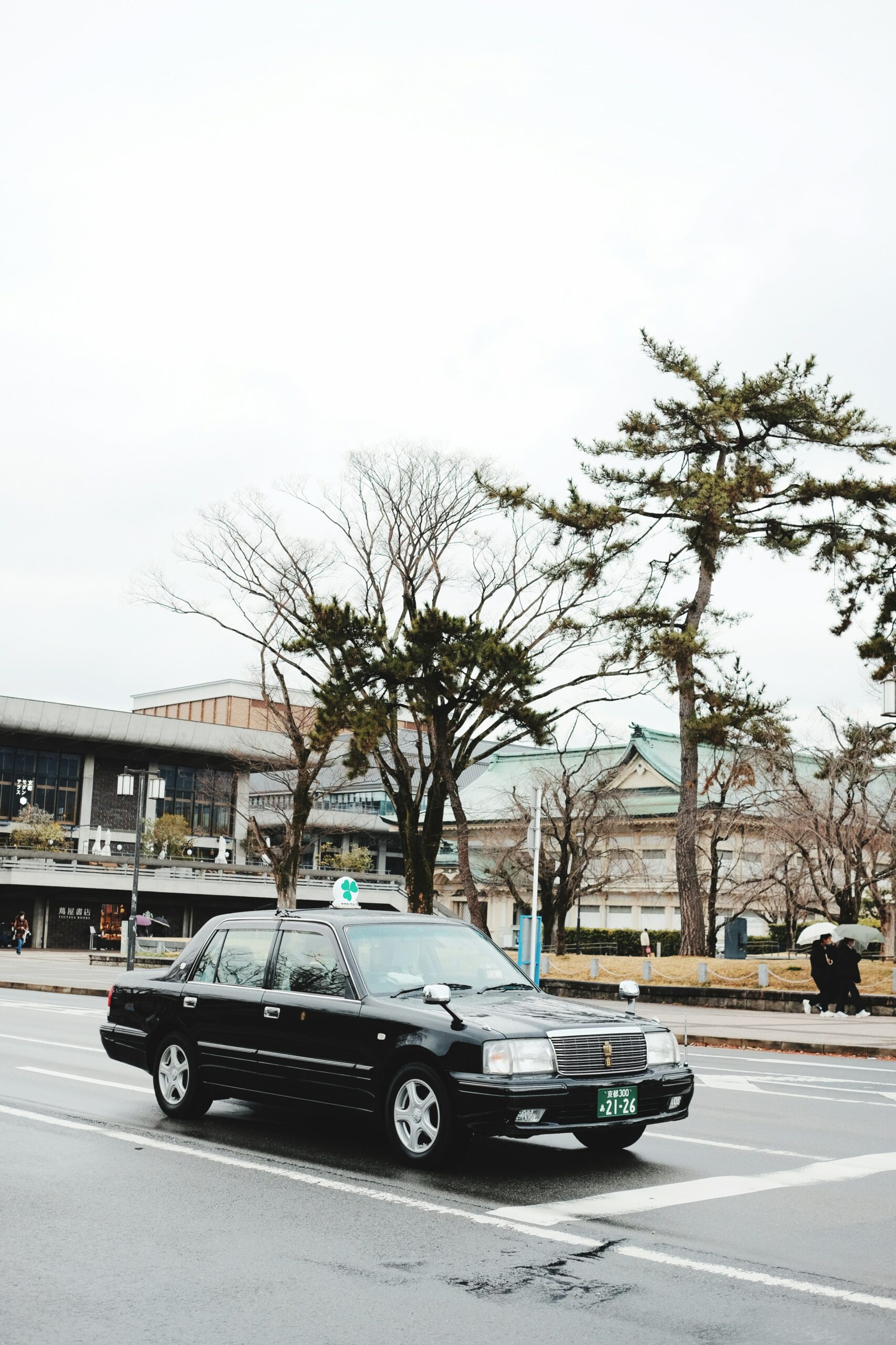Japan, an island nation rich in culture and tradition, has a transportation system that is as unique and intricate as its history. Among the various modes of transport available, taxis hold a special place, providing both convenience and a glimpse into the everyday lives of its citizens. However, for tourists unfamiliar with the local customs and systems, hailing a taxi can sometimes feel daunting. In this article, we will explore the nuances of the taxi experience in Japan, from understanding the culture and etiquette to practical tips for a smooth ride.
Understanding Japan’s Unique Taxi Culture and Etiquette
Japan’s taxi culture is deeply rooted in tradition and respect. Taxis are viewed as an extension of the public transportation system and are expected to maintain a high standard of service. Drivers are often dressed sharply, reflecting the nation’s commitment to professionalism. It’s common for taxi drivers to bow when greeting passengers, offering a polite introduction to the journey ahead.
Etiquette extends beyond just greetings; passengers are expected to enter and exit the vehicle from the left side, typically avoiding the rear passenger door. This is due to the country’s left-side driving system, ensuring safety for both the rider and the driver. Additionally, passengers should avoid excessive noise and maintain a courteous demeanor throughout the ride, as creating a serene atmosphere is highly valued.
Another crucial aspect of taxi etiquette in Japan is the practice of respecting personal space. It’s advised for passengers to refrain from engaging in overly personal conversations with the driver unless prompted. This cultural norm fosters a comfortable environment for both parties, and drivers often appreciate the quiet.
Tipping is not customary in Japan, as exceptional service is already expected. Instead, riders can show appreciation by simply thanking the driver upon departure. This reflects the Japanese philosophy of service, where the act of providing a smooth ride is its own reward.
Lastly, while it may seem natural for tourists to engage drivers in conversation, it’s essential to gauge the driver’s comfort level. Some drivers may not speak English fluently, which can limit communication. Keeping interactions light and respectful will ensure an enjoyable experience.
Understanding these cultural nuances will not only enhance the taxi experience but also foster a deeper appreciation for Japan’s societal values.
The Different Types of Taxis Available in Japan
Japan boasts a variety of taxi services that cater to different needs and preferences. The most common type is the standard taxi, identifiable by its black exterior and yellow sign. These taxis are readily available in urban areas and can be hailed on the street or found at designated taxi stands.
In addition to standard taxis, Japan also offers deluxe or premium taxis, often referred to as "black taxis." These vehicles are more spacious and generally provide a higher level of service, including amenities like free Wi-Fi and refreshments. They are an excellent option for those looking to travel in comfort, especially for longer distances.
For larger groups or families, there are also van taxis, which can accommodate more passengers and luggage. This option is particularly useful for travelers with significant baggage or those needing additional space for comfort.
Ride-hailing apps have gained popularity in Japan, allowing users to book taxis through their smartphones. Services like JapanTaxi and DiDi have emerged, providing tourists with a convenient and tech-savvy way to navigate the taxi system.
For those seeking an authentic experience, traditional "sightseeing taxis" offer guided tours around popular tourist spots. These taxis are driven by knowledgeable drivers who can share insights about local culture and attractions, providing a personalized touch to the journey.
Understanding the different types of taxi services available can help travelers choose the most suitable option for their needs, ensuring a smooth and enjoyable ride throughout Japan.
How to Hail a Taxi: Tips for Tourists in Japan
Hailing a taxi in Japan can be a straightforward process, but it may differ from what tourists are accustomed to in their home countries. The first step is to look for taxis with illuminated signs on their rooftops. A lit sign usually indicates that the taxi is available for hire, while an unlit sign means it is occupied.
While it is possible to wave down a taxi on the street, it is often more effective to head to a designated taxi stand found near train stations, airports, and major hotels. These stands typically have a queue of taxis waiting for passengers, making the process smoother and more organized.
When approaching a taxi, it is helpful to have your destination written down in Japanese, especially if you are in a rural area or if the driver does not speak English. Many hotels will assist with this, providing you with a card that contains your destination.
Once you enter the taxi, it is customary to wait for the driver to open the door for you. In Japan, taxi doors are equipped with automatic controls, and trying to open the door yourself can be considered rude.
It’s also important to note that some taxis may have a ‘no smoking’ policy, which is generally adhered to in Japanese culture. Be respectful of these regulations to ensure a pleasant ride.
Lastly, patience is key. Traffic can be heavy in urban areas, and drivers may take longer routes to avoid congested streets. Embracing the local way of life will enhance your overall experience of navigating Japan, including its taxi services.
Inside the Taxi: What to Expect from the Ride
The interior of Japanese taxis is known for its cleanliness and comfort, often exceeding the expectations of many travelers. Most taxis are equipped with plush seats and climate control, ensuring a pleasant experience regardless of the season.
Upon entering the taxi, passengers will typically find small amenities such as water bottles or tissues available for use. Some premium taxis may even offer Wi-Fi, enabling travelers to stay connected during their journey.
The vehicles are equipped with a sophisticated GPS system that helps the driver navigate efficiently. This feature ensures that passengers are taken on the quickest route to their destination, and in many cases, the drivers are well-acquainted with the local area.
In addition to the GPS, many taxis have screens displaying information such as the route, traffic updates, and fare estimates. This transparency can help passengers feel more at ease during their ride, as they can monitor their journey in real-time.
As for music, many taxis play soft background tunes, creating a tranquil atmosphere that aligns with Japan’s respect for peace and quiet. This setting invites a moment of relaxation, allowing passengers to enjoy the sights of the city or simply reflect on their journey.
Lastly, should a passenger need assistance during the ride, taxi drivers in Japan are known for their willingness to help. Whether it’s adjusting the temperature or recommending a nearby restaurant, drivers often aim to make your ride as enjoyable as possible.
The Role of Technology in Japan’s Taxi Services
Technology has increasingly played a vital role in Japan’s taxi services, revolutionizing the way passengers book rides and interact with drivers. With the rise of smartphones, ride-hailing apps like JapanTaxi and DiDi have gained traction, making it easier for tourists and locals alike to secure a taxi. These apps allow users to book rides, track their taxi’s location, and even choose their preferred vehicle type.
In addition to ride-hailing apps, many taxis are now equipped with advanced GPS systems that facilitate optimal route planning. This technology enhances efficiency, helping drivers navigate through the bustling streets of Japanese cities while avoiding congested areas.
Furthermore, digital payment methods have become more widely accepted in taxis, particularly in urban areas. Passengers can now pay for their rides through mobile wallets or credit cards, making transactions smoother and more convenient.
The integration of AI and machine learning in the taxi industry has also shown promise, enabling predictive algorithms that can analyze traffic patterns and adjust routes accordingly. This technological advancement not only saves time but also enhances the overall travel experience.
Moreover, the use of contactless payment options has become increasingly important in the wake of the COVID-19 pandemic. Many taxi companies have implemented measures to reduce physical contact between drivers and passengers, ensuring a safer travel environment.
Overall, technology is shaping the future of taxi services in Japan, promoting efficiency and convenience while maintaining the high standards of service that the country is known for.
Fare Structures: What You Need to Know Before Riding
Understanding the fare structure of Japan’s taxi services is crucial for tourists seeking to avoid surprises at the end of their ride. Most taxis operate on a meter system that calculates fares based on distance traveled and time spent in the vehicle. The fare is typically displayed on a screen within the taxi, allowing passengers to monitor the cost as they travel.
In urban areas, the initial fare is usually higher due to the cost of living and demand. Fares generally start at a base rate, which covers the first few kilometers, after which additional charges apply per kilometer traveled. The fare may also increase during late-night hours, with a surcharge applied to rides taken after a certain time, usually around midnight.
Passengers should be aware of extra charges that may apply for specific services, such as toll fees for highways or fees for carrying large pieces of luggage. It’s advisable to inquire about any additional costs before starting the journey to avoid misunderstandings regarding the final fare.
For those who prefer a more predictable cost, some taxi services offer fixed-rate fares for popular destinations, such as airports. This option provides peace of mind, allowing passengers to know the exact cost of their ride before getting in the vehicle.
It’s also important to note that the Japanese tax system includes a consumption tax, which is typically included in the fare displayed on the meter. This ensures transparency and reduces the likelihood of any unexpected fees at the end of the ride.
By familiarizing themselves with the fare structures, tourists can navigate Japan’s taxi services with confidence, ensuring a seamless travel experience.
Language Barriers: Communicating with Your Driver
Navigating language barriers can be one of the most challenging aspects of using taxi services in Japan, particularly for non-Japanese speakers. While many taxi drivers are skilled in providing excellent service, their proficiency in English can vary greatly. To bridge this gap, tourists should consider a few strategies.
First and foremost, having your destination written down in Japanese is invaluable. Many hotels and tourist information centers can provide you with cards or printouts that include the name and address of your desired location in Japanese characters. This simple step can eliminate confusion and enhance communication with your driver.
If writing it down isn’t possible, utilizing translation apps can also be helpful. Smartphone applications like Google Translate can provide real-time translations, allowing passengers to communicate with their drivers more effectively. However, it’s advisable to download the necessary language packs beforehand to ensure functionality in areas with poor internet connectivity.
Another option is to use simple English phrases or gestures when communicating with drivers. Keeping your requests clear and concise, such as indicating directions or essential stops, can help facilitate understanding. Most drivers are willing to assist and will appreciate your effort to communicate respectfully.
In the event of a serious misunderstanding, passengers can also rely on landmarks or well-known establishments. Mentioning a recognizable spot near your destination can help guide drivers who may not fully understand the address you provided.
Lastly, patience and a positive attitude are essential. Language barriers can lead to minor frustrations, but maintaining a friendly demeanor will go a long way in fostering a pleasant interaction with your driver.
By employing these strategies, tourists can minimize the impact of language barriers, enhancing their overall taxi experience in Japan.
Safety Measures: Riding Taxis in Japan with Confidence
Safety is a top priority for travelers using taxi services in Japan, and the country is known for its low crime rate and stringent regulations governing public transportation. Taxis are equipped with various safety features, including seatbelts and child safety seats, ensuring a secure ride for all passengers.
Before stepping into a taxi, it’s advisable to verify the vehicle’s credentials. Official taxis in Japan are licensed and carry a taxi identification number in plain sight. Passengers should only choose taxis from reputable companies to ensure a safe experience.
Drivers are required to undergo thorough background checks and training, ensuring that they are well-versed in safety regulations and customer service. Most taxi drivers take their responsibilities seriously, providing a professional and secure environment for passengers.
Moreover, many taxis are equipped with GPS tracking systems, allowing for real-time monitoring of the vehicle’s location. This feature offers an additional layer of security, particularly for solo travelers or those unfamiliar with the area.
During the ride, passengers should feel comfortable expressing any concerns they may have. If a driver engages in reckless behavior or makes you uncomfortable, it is entirely within your rights to request to stop the taxi immediately.
Lastly, in the wake of the COVID-19 pandemic, many taxi companies have implemented additional safety measures. These include regular cleaning and sanitization of vehicles, along with the use of protective barriers between drivers and passengers to minimize physical contact.
By understanding and utilizing these safety measures, travelers can ride taxis in Japan with confidence, knowing that they are in a secure environment.
Navigating Payment Options: Cash vs. Card
When it comes to paying for taxi rides in Japan, understanding the payment options available can significantly enhance the overall experience. Traditionally, cash has been the dominant form of payment, and many taxi drivers prefer it, particularly in rural areas. Yen is the currency used, and passengers should ensure they have sufficient cash on hand for their rides.
However, the landscape of payment methods has evolved in recent years. In urban centers, many taxis now accept credit cards and mobile payment options, including Suica and PASMO cards, which are commonly used for public transportation. This shift towards digital payment methods provides convenience for travelers who prefer to avoid carrying large amounts of cash.
Before your journey begins, it’s wise to check whether the taxi you are using accepts credit cards. Most taxis that do will have visible signage indicating their payment options. If you are unsure, don’t hesitate to ask the driver or check the taxi company’s website for detailed information.
For those who choose to pay with cash, ensuring that you have smaller denominations is advisable. Taxi drivers may not always have change for larger bills, and having the appropriate amount can streamline the payment process.
Additionally, if you find yourself in a situation where you need to pay with a card but the taxi does not accept it, consider using ride-hailing apps that facilitate cashless transactions. These platforms can offer seamless payment experiences, allowing you to book and pay for your ride directly through your smartphone.
By familiarizing yourself with payment options, you can navigate Japan’s taxi services efficiently, ensuring that financial transactions are as smooth as the ride itself.
The Impact of COVID-19 on Japan’s Taxi Industry
The COVID-19 pandemic has significantly affected transportation industries worldwide, and Japan’s taxi sector is no exception. As travel restrictions and social distancing measures were implemented, taxi services faced a steep decline in ridership. Many drivers experienced economic hardships, leading to a temporary reduction in available taxis on the road.
In response, the taxi industry in Japan has adapted by implementing enhanced health and safety measures. Taxis are now routinely disinfected between rides, and many companies have provided personal protective equipment (PPE) for drivers to ensure their safety and that of passengers.
Moreover, the rise of contactless payment options has become even more crucial during the pandemic. Many companies have encouraged the use of digital payments to minimize physical contact, further facilitating a safer riding experience.
As the situation has progressed, taxi services have also begun to incorporate technology to account for changing consumer behavior. Many companies have launched apps that allow passengers to book rides in advance, reducing wait times and minimizing exposure to crowded areas.
Additionally, the government has introduced measures to support taxi drivers and companies during these challenging times. Financial assistance programs have been established to help drivers keep their vehicles on the road and to support the industry’s recovery.
While the pandemic has posed challenges, the taxi industry in Japan is gradually recovering, showcasing resilience and adaptability in the face of unprecedented circumstances. As the world opens up, travelers can expect a heightened focus on health and safety in Japan’s taxi services.
Comparing Taxis to Other Transportation Methods in Japan
When navigating Japan, travelers have a plethora of transportation options at their disposal, each with its unique strengths and weaknesses. Taxis offer convenience, especially for those carrying luggage or traveling in groups. They provide door-to-door service, eliminating the need to navigate public transportation systems.
However, taxis can be more expensive than other forms of transportation, particularly for longer distances. For budget-conscious travelers, Japan’s extensive and efficient public transportation system is often the preferred choice. The country boasts one of the world’s most reliable train networks, including the Shinkansen (bullet train), which connects major cities at high speeds.
Public transportation is not only cost-effective but also environmentally friendly, reducing the carbon footprint compared to individual taxi rides. Additionally, trains and buses operate on strict schedules, providing a level of predictability that taxis may not offer, especially during peak hours.
For those who prefer a more localized experience, buses can be an excellent alternative. They often reach destinations that may not be serviced by trains and can provide insight into the everyday lives of local residents. However, buses may require more navigation and planning, particularly for those unfamiliar with the routes.
For the tech-savvy traveler, ride-hailing apps provide a modern alternative to traditional taxis. These apps often allow users to compare prices and services, providing flexibility in choosing the right mode of transport. They also offer the convenience of cashless payments and the ability to track rides in real-time.
Ultimately, the choice between taxis and other transportation methods in Japan will depend on individual preferences and circumstances. Whether you opt for the ease of a taxi or the efficiency of public transport, Japan’s transportation network ensures that all travelers can find a suitable means of travel.
Navigating the taxi experience in Japan can be both rewarding and enriching, especially when equipped with knowledge of the local culture, etiquette, and practical tips. From understanding the various types of taxis available to utilizing technology and safety measures, travelers can enhance their journey through this captivating nation. Whether you choose to hail a taxi on the street or book one through a ride-hailing app, embracing the unique aspects of Japan’s transportation system will surely lead to unforgettable experiences. As travel returns to normalcy, Japan’s taxis will continue to serve as a vital link between travelers and the rich tapestry of culture and tradition that the country has to offer.






